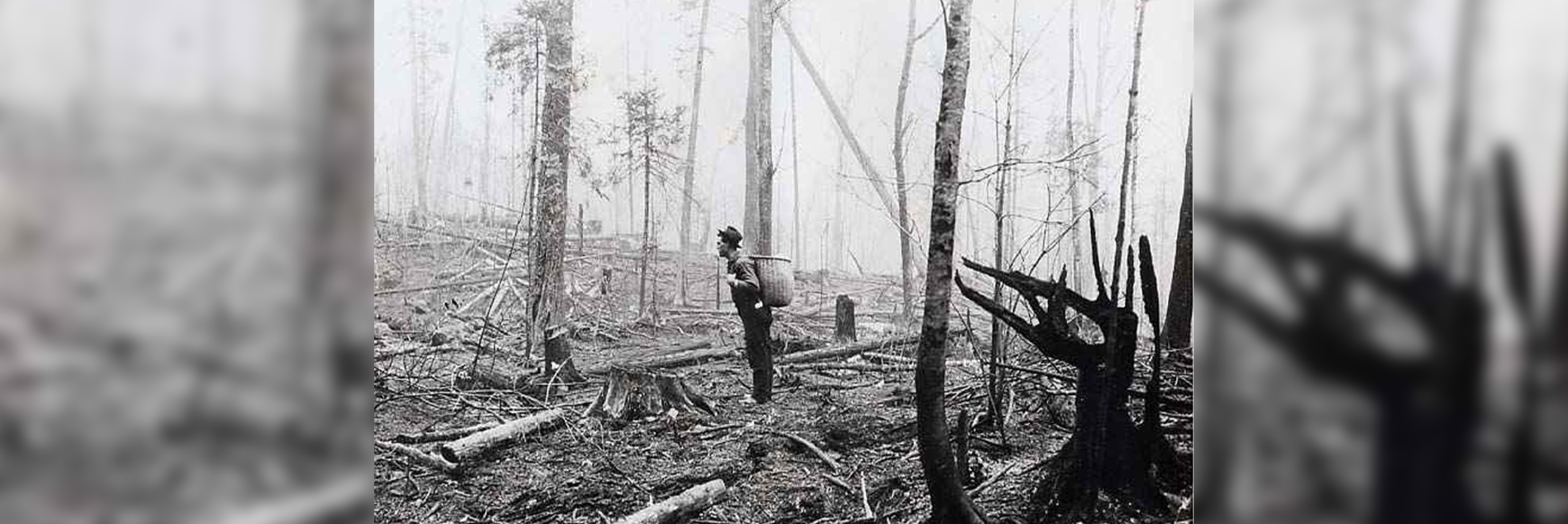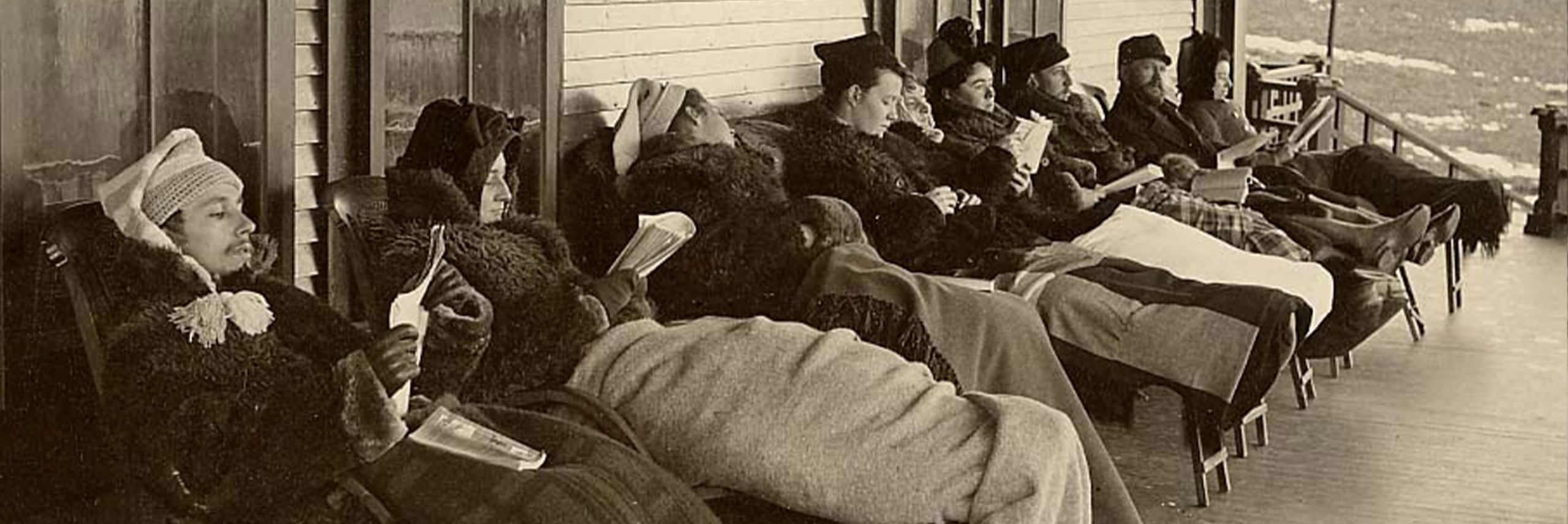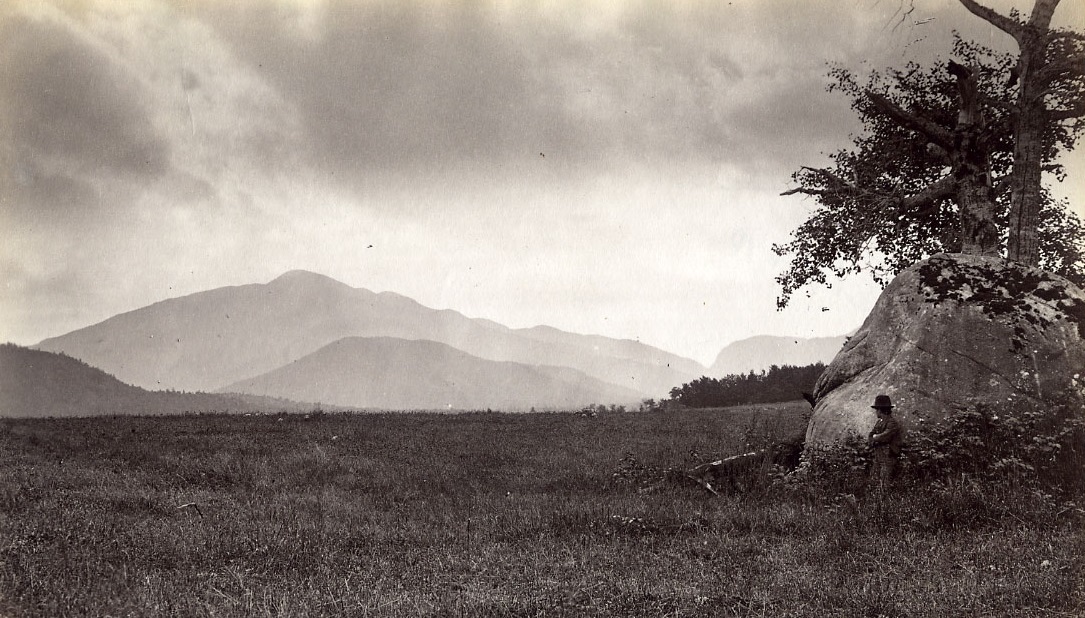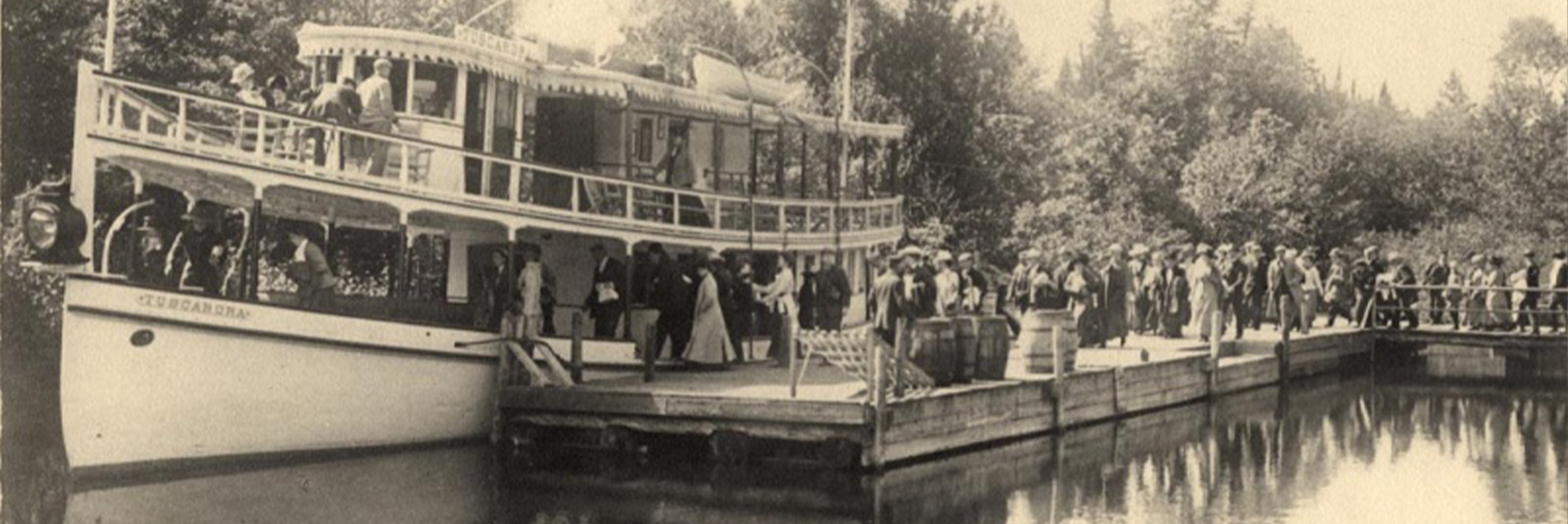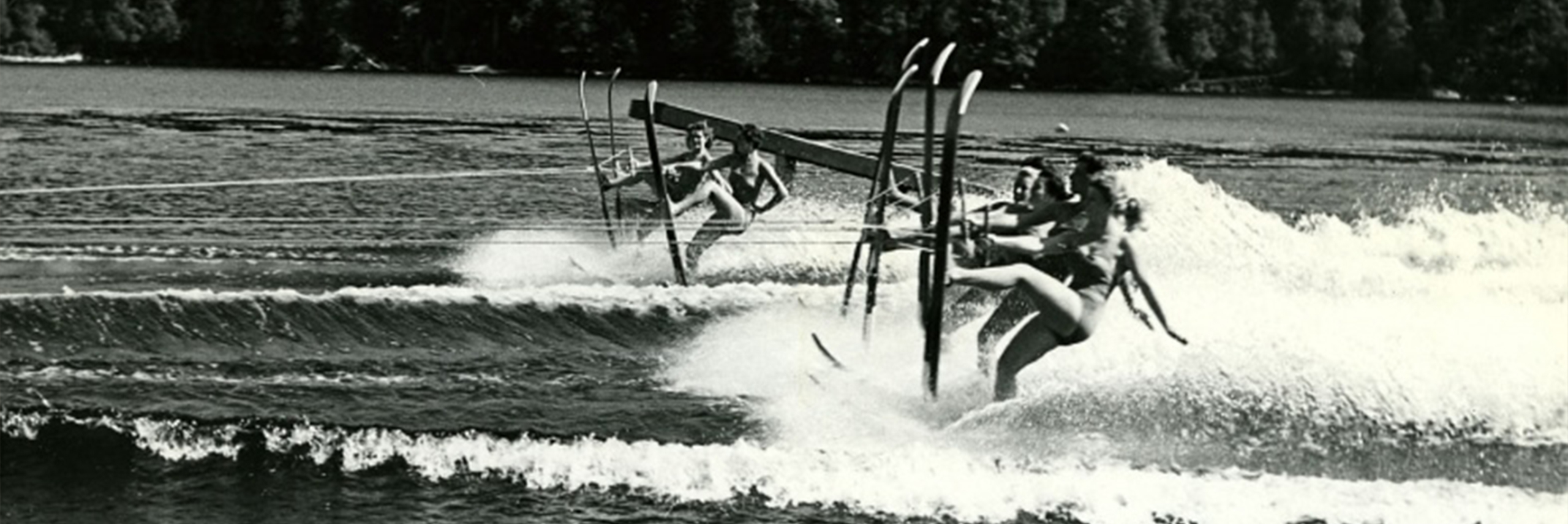The Adirondacks are Burning: A Brief History of Forest Fires
The Adirondacks have a long history of epic blazes. While there are no recent comparisons with the terrible devastation faced by the west, fire is no stranger to the vast North Country woodland. Whenever drought conditions exist, there is a heightened risk for fire. Following disastrous fires around the turn of the 20th century, especially those of 1903 and 1908, measures were established to prevent and detect fires, eliminating the scale of destruction that occurred in the Adirondacks a hundred years ago.
There are two main fire seasons in the Adirondack region, one in the spring and the other in the fall. The spring fire season stretches from the time that the snow melts until green leaves start to appear, usually from April until late May. During this time there is an abundance of dead leaves and vegetation on the ground from the previous autumn. Spring winds dry out this material, creating fuel for fires. Once foliage appears in late May the risk of fire decreases because of a greater amount of moisture held in at ground level.
The spring of 1903 was a perfect example of these conditions; the only spring moisture was supplied by snow melting in late March, followed by a seventy-two day drought. The unusually dry spring resulted in a number of forest fires that burned over 600,000 acres of land in the Adirondack Park. At this time few fire prevention measures were in place. Combined with primitive methods of fire detection, almost no mechanized equipment, and slow modes of transportation the conditions were right for the devastation that occurred in 1903.
In periods of drought a spark from a campfire, burning brush, or improperly extinguished smoking materials can ignite forests. In 1903 there were the added dangers of insufficiently regulated logging and railroad companies that actually triggered a number of the blazes.
During the early 1900s lumbering operations tended to follow railroad tracks for easier transportation. Both logging and railroad companies in the Adirondacks relied on steam locomotives that were commonly fueled by coal or wood, which had a tendency to send off sparks. While there was a law requiring engines used in the woods to be equipped with steel netting to prevent these sparks from escaping, very few companies adhered. The hundred-dollar fine for failure to comply with the law was a minor annoyance to wealthy companies, and did little to ensure that locomotives had screens or netting.
The center of the 1903 fires was at Lake Placid, New York. However fires also raged around the Adirondacks in Schroon Lake, Lake George, Olmsteadville, Newcomb, Ausable Forks, Saranac Lake and Clintonville. The fires were so significant that there were reports of cinders falling as far away as Albany, N.Y., 150 miles south of Lake Placid. The smoke from the fires even caused concern in Washington, D.C.
Five years later the Adirondacks would face the most devastating fire season in history, and endure blazes that burned on an off for four months. The most destructive fires would burn during the fall, the Adirondacks’ other fire season. In September 1908, New York City and Quebec City to the north were blanketed in clouds of smoke from fires raging in the Adirondack counties of Hamilton, Herkimer, St. Lawrence, Franklin, and Essex. As with the blazes of 1903, human factors would contribute to the devastation; the 1908 drought season coincided with the peak of logging and railroad traffic in the region.
Adirondack loggers were not known, at the time, for following safe logging practices. Fire prevention was not a chief concern. Most lumbermen were resistant to the idea of “limbing” or removing all tree branches, usually from conifer trees, before discarding the tops. This was because treetops were seen not only as waste, but the practice was also time-consuming.
Woods bosses hated to waste time. Instead of cutting the limbs off of treetops so that they would lie flat on the ground and decompose properly, loggers would simply discard the tops unlimbed. The treetops formed dense tangles of air-dried wood that became huge piles of tinder, needing only a spark to ignite. Often, as seen in 1903, railroad locomotives passing by would supply this spark.
Late September marked the climax of this fire season, with the worst single fire of all destroying the small community of Long Lake West, now Sabattis, N.Y. The fire was started on September 9, 1908 by the passing Mohawk & Malone locomotive when it shot off a spark that landed in trackside tinder. Other trains rushing men in to fight the fire further contributed to the blaze. It was reported that flames had spread all along the track from Horseshoe to Nehasane, a distance of 12 miles.
The Long Lake West fire destroyed everything in its path. While residents were evacuated, nothing was left of the town except charred embers. The heat generated by the fire melted barrels of nails into lumps. Miles of forest surrounding the town were incinerated along with a dozen homes, the church, a school, the Wilderness Inn, a livery stable with room for 200 horses that had been set free to fend for themselves, and Moynihan’s storehouse and freight warehouse containing 50 barrels of kerosene and 1,500 pounds of dynamite. The intense heat of this fire even twisted railroad track.
While the Long Lake West fire was not the only one of late September as fires raged all over the Adirondacks, it was by far the most destructive. The fires of 1908 were the worst of their kind and convinced the public that humans caused most forest fires, and therefore could be prevented. While the fires of 1903 were bad, most people at the time saw them as an act of God. It was not until 1908 that opinions started to change.
By 1909 many new laws were passed with the goal to prevent and detect forest fires earlier. These included requiring locomotives to burn only oil from April 15 through October 31, preventing the sparks that ignited so many fires. Logging companies were required by law to limb everything left behind. New systems of fire surveillance were adopted that included building fire towers and hiring state regulated “patrolmen.” Power was also given to the governor to close both public and private forests during times of high fire danger.
While there have been fires since, the many regulations that have been put in place since 1909 have prevented the scale of the historic 1908 fires from ever occurring again.


